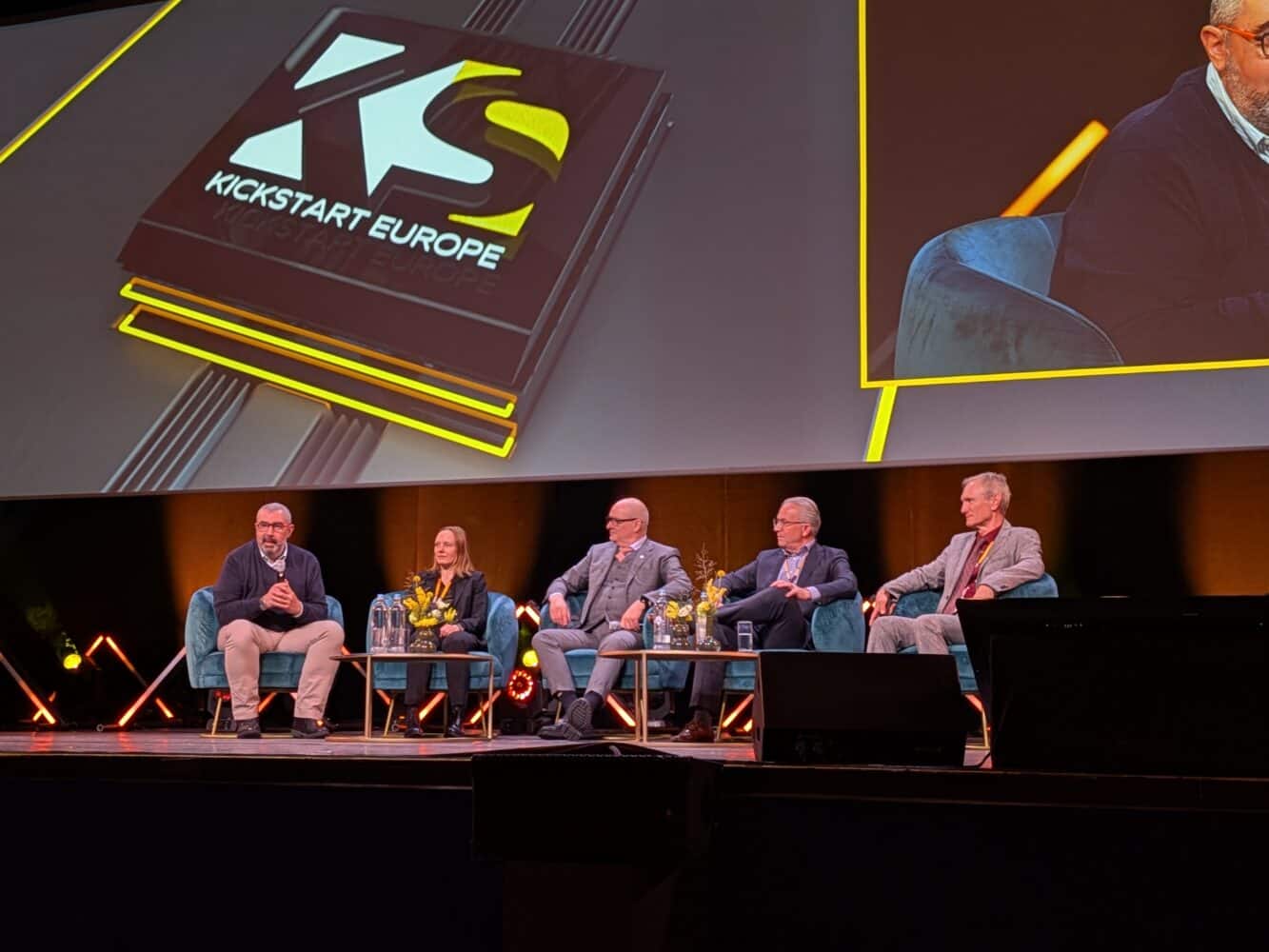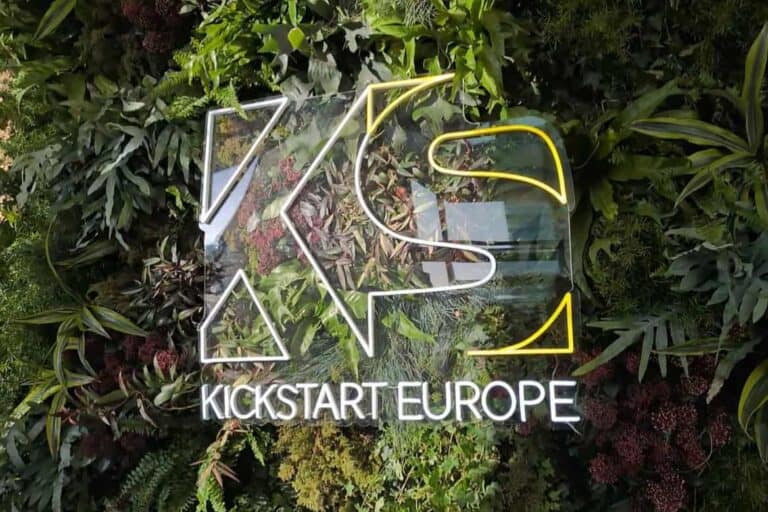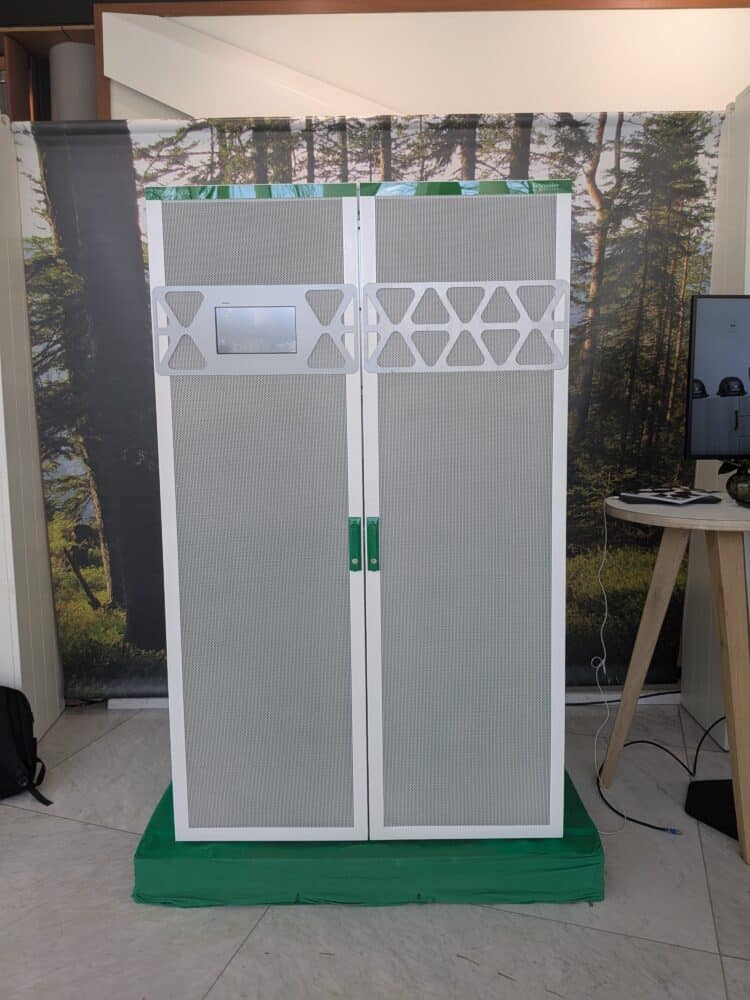Schneider Electric views the future of data centers optimistically. Because of the pressing ‘power crunch’ in the electricity grid, innovation is needed. At the French company, that manifests itself both in products and in ideas. The star of the show: the recently introduced Galaxy VXL UPS.
During Kickstart Europe in Amsterdam, Schneider Electric tells us in detail about the Galaxy VXL. This UPS (Uninterruptible Power Supply), designed for a data center world filled with heavy HPC workloads and AI, illustrates the industry’s current demands. Before diving into the broader context, let’s first focus on the UPS itself.
Galaxy VXL UPS
The Galaxy VXL UPS was announced in December. Starting with its most basic specifications: it’s a three-phase unit (as you’d expect from a data center UPS) offering up to 1.25 MW of power (1,042 kW per square meter) per frame. That adds up to 5 MW for four parallel units, which will regularly be used for extra redundancy and load balancing. A single VXL UPS measures one meter deep, 1.2 meters wide, and 1.97 meters high.
Schneider sought the most sustainable design possible, embodying the ‘circular by design’ approach it has adopted. Although a UPS like this typically remains in operation for ten to fifteen years, it’s crucial to reuse each frame’s materials as efficiently as possible at the end of its lifecycle. This wasn’t always a concern for everyone involved previously, such as with the older UPSs that the VXL replaces. Maintenance these days is relatively straightforward, and the new design supports both lithium-ion and VRLA batteries—even allowing you to switch from one type to the other.
The emphasis on efficiency is evident in everyday use. Schneider promises 99 percent efficiency in eConversion mode and 97.5 percent in double conversion mode. Compared to older models, these percentages halve the CO2 footprint.
Reduced consumption also has an economic payoff. The VXL’s sustainable nature leads to a lower TCO. It’s further enhanced by software-driven security and monitoring functions, with EcoCare services aiming to make maintenance as painless as possible. With EcoCare, Schneider estimates that customers can save up to 75 percent on unplanned downtime and 40 percent on planned downtime.
Tip: Schneider Electric warns of AI’s impact on energy use
Revamping a data center is no small task. However, the extra megawatt capacity in an ultra-compact form factor opens up a host of possibilities. As mentioned, a UPS has a long lifespan; with an estimated 10–15 years of service, operators might only see two generations of UPS before an entire data center is overhauled (which often happens after roughly twenty years, although various operators give us quite varied figures here). For those looking to make changes now, the Galaxy VXL is arriving at just the right time to get a long-term benefit.
Over the top
With every new UPS generation, Schneider Electric and its competitors push further. “Where can we still make gains?” is a frequently asked question in the early design phase. Implicit in that question is that some elements inevitably remain unchanged. The extra space on top of the UPS, securely sealed off during normal use, still has to be the same size as before. While batteries, power supplies, and chips keep shrinking, copper cables remain copper cables—offering little opportunity to reduce space.
Still, the added capacity per UPS is well-timed and is based on a trend that Schneider anticipated. Turning a concept into a product usually takes about three years, knowing that each design builds on lessons learned from the previous one. Schneider saw the further growth in HPC workloads coming when the VXL was in its early design stages, but not nobody could have seen the GenAI hype arriving when it did. Even so, this compact model is exactly what an “AI-ready” data center needs, the company promises, and Schneider imposes stricter sustainability requirements on itself than what regulations mandate in 2025. By 2035, those requirements will inevitably become tougher, but the Galaxy VXL UPS is already prepared for them.
That things must change in the data center world is a recurring theme at Kickstart Europe, where Schneider is prominently involved. The innovations in its latest product can’t be viewed in isolation from the industry it will serve.

Hotter, more economical, more vital
According to Marc Garner, SVP Secure Power & Data Center Business at Schneider Electric, the current ‘power crunch’ demands a new approach that goes beyond simply designing, building, and operating data centers and their equipment. Significant attention must be paid to integrating these facilities with their immediate surroundings. Everyone needs to learn to use energy more efficiently, which is easiest for operators when they collaborate with external stakeholders.
Liquid cooling is taking a central role, because it requires a different, more adaptable data center design. It’s a tricky balancing act: the most efficient data center is set up for either fully liquid cooling, fully air cooling, or immersion cooling. Meanwhile, growing demand for computing power is driving up costs, making data center capacity across Europe scarcer and more expensive. Kevin Restivo, Director of Data Centre Research at CBRE, noted at Kickstart that 2025 will be the first year Europe’s available capacity remains structurally below ten percent. In 2022, it was still around twenty percent.
Schneider Electric will certainly be busy. To illustrate the increasing demand for capacity: in 2025 alone, Europe’s power supply will grow by 22 percent compared to last year. “Europe is becoming a mature data center market,” Restivo says. The cost of a new colocation, currently around 12 million euros, is steadily rising but is expected to remain profitable.
Solvable problems
Despite concerns about grid congestion in several regions, Garner emphasizes that there isn’t necessarily a power shortage across all of Europe. For instance, Northeast England and Scotland still have ample room for expansion, just to name an example in the northwest. Leveraging that energy requires close cooperation with utilities, with transparency among all parties about actual MW requirements.
Throughout Kickstart, speakers repeatedly mention that operators often state a certain number of required megawatts but don’t actually use it. As a result, the industry loses credibility with policymakers, who may reject an urgently needed expansion if they feel misled too often. According to Garner, building data centers must continue. We live in a data-driven world, so continued construction is inevitable.
This calls for more than just partnerships between stakeholders in individual data center projects. Schneider Electric and Digital Realty are also tackling Scope 3 emissions together—the most stubborn and ambiguous category of CO2 emissions. These are what remain after subtracting the impact of your own operations and direct energy supply. Addressing them means you can’t simply excuse yourself through investments. In fact, you actually generate less revenue by urging users to run their equipment longer or repurpose it, exactly what Digital Realty aims to do with its Schneider Electric devices.
A reliable local power supply is the foundation of data center operations. The use of gas turbines or other on-site power generation is already popular in the United States. Garner believes Europe will follow suit quickly, out of necessity. In recent months, Schneider Electric has popularized the concept of ‘bending the energy curve,’ referring to decoupling growing data demand from rising energy consumption. It’s urgently needed. While total data volume jumped from 2 to 64 zettabytes between 2010 and 2020 without a proportional increase in power consumption, from 2020 to 2024 we’ve seen energy demand double along with the continuing data explosion. Clearly, that’s not sustainable.
PUE down
The solution, Garner reminds us, hinges on PUE (Power Usage Effectiveness)—a metric that data center operators continually chase. The closer PUE gets to 1.0, the more efficient the infrastructure. A perfect PUE of 1.0 would mean all power goes directly to IT workloads, which is unrealistic in practice, but the industry has made significant strides towards that figure. The average PUE dropped from 2.2 in 2010 to about 1.5 in 2024, for example. It’s projected to hit 1.4 by 2026–2030. Getting it down to around 1.2 will involve major changes—raising operating temperatures so fans consume less power, and adopting more efficient hardware faster.
By Garner’s estimates, these measures could slash total power consumption by around 17 percent. Deciding which devices to replace early and which to keep is a balancing act. But one principle is certain: anything that significantly improves compute efficiency pays for itself in saved electricity. On top of that, the power supply must be robust, reliable, and green. The longer those investments last, the better.
Conclusion: a slimmed-down UPS for a power-hungry market
Gone are the days when simply scaling up could provide easy efficiencies for data centers. Today, the industry has to clear some tough hurdles to continue growing. Schneider Electric anticipated this, recognizing the need for equipment that’s not just powerful and efficient but also far more sustainable than ever before. In the end, a UPS must be disposed of in a way that allows for maximum recycling, and preferably have components that can be reused outright. It’s not enough to be “AI-ready” in some vague way. It’s about being ready for the demands of 2035 and beyond, and the Galaxy VXL UPS is a step in that direction.
Also read: Sustainability in data centers: where do things stand?

